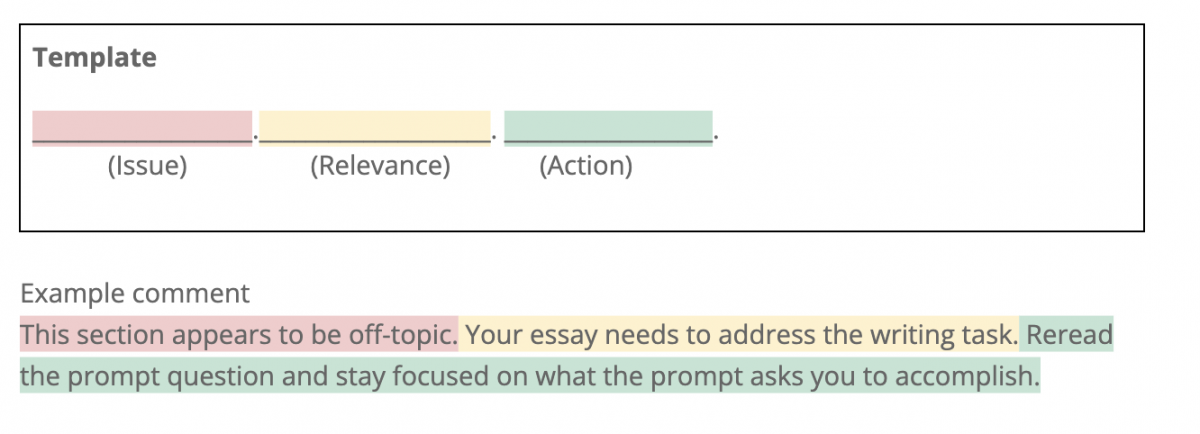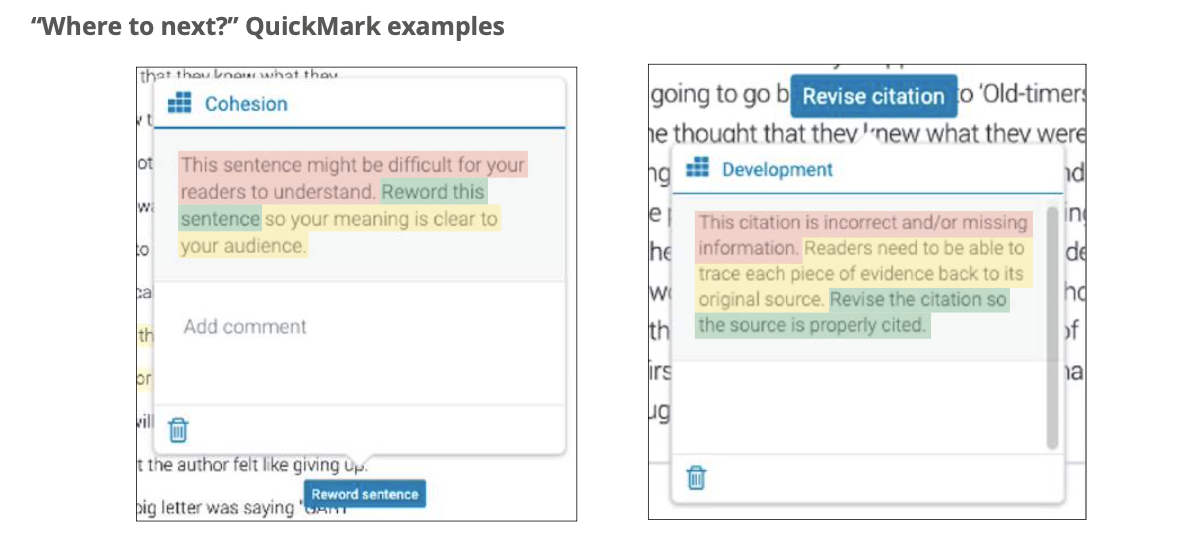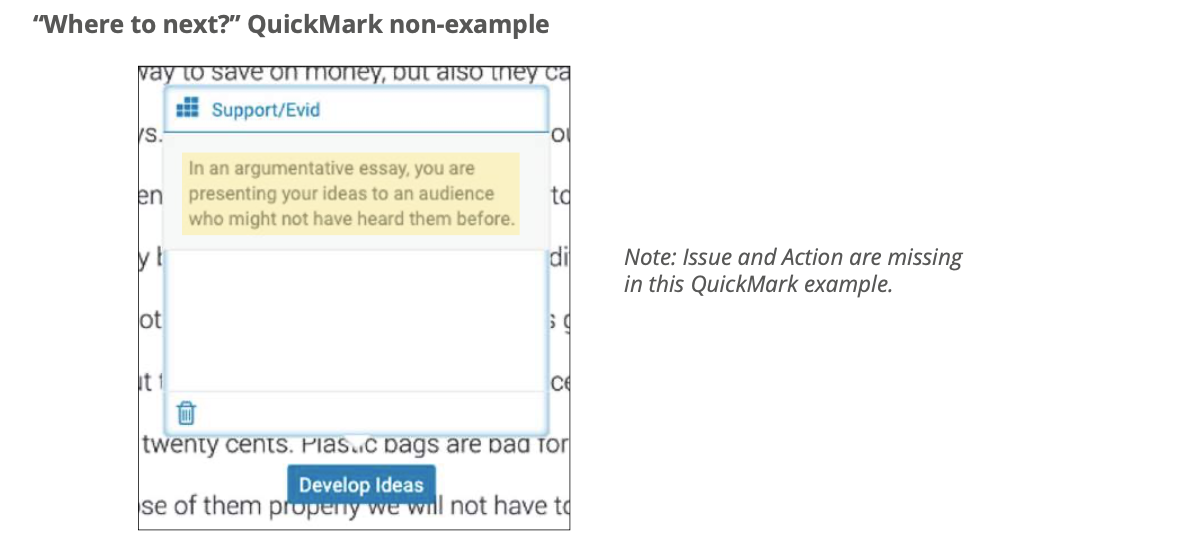Providing constructive feedback examples to students is an important part of the learning journey and is crucial to student improvement. It can be used to feed a student’s love of learning and help build a strong student-teacher relationship. But it can be difficult to balance the “constructive” with the “feedback” in an effective way.
On one hand, we risk the student not absorbing the information, and therefore missing an opportunity for growth when we offer criticism, even when constructive. On the other hand, there is a risk of discouraging the student, dampening their desire to learn, or even harming their self-confidence. Further complicating the matter is the fact that every student learns differently, hears and absorbs feedback differently, and is at a different level of emotional and intellectual development than their peers.
We know that we can’t teach every student the exact same way and expect the same results for each of them; the same holds true for providing constructive feedback examples. For best results, it’s important to tailor how constructive feedback is provided based on content, student needs, and a variety of other factors.
In this blog, we’ll take a look at constructive feedback examples and the value of effective instructor feedback, centering on Dr. John Hattie’s research on “Where to next?” feedback. We’ll also offer key examples for students, so instructors at different grade levels can apply best practices right away.
What is constructive feedback?In 1992, Dr. John Hattie—in a meta-analysis of multiple scientific studies—found that “feedback has one of the positive influences on student achievement,” building on Sadler’s concept that good feedback can close the gap between where students are and where they aim to be (Sadler, 1989).
But before getting too far into specifics, it would be helpful to talk about what “constructive feedback” is. Not everyone will define it in quite the same way — indeed, there is no singular accepted definition of the phrase.
For example, a researcher in Buenos Aires, Argentina who studies medical school student and resident performance, defines it, rather dryly, as “the act of giving information to a student or resident through the description of their performance in an observed clinical situation.” In workplace scenarios, you’ll often hear it described as feedback that “reinforces desired behaviors” or, a definition that is closer to educators’ goals in the classroom, “a supportive way to improve areas of opportunity.”
Hattie and Clarke (2019) define feedback as the information about a learning task that helps students understand what is aimed to be understood versus what is being understood.
For the purposes of this discussion, a good definition of constructive feedback is any feedback that the giver provides with the intention of producing a positive result. This working definition includes important parts from other, varied definitions. In educational spaces, “positive result” usually means growth, improvement, or a lesson learned. This is typically accomplished by including clear learning goals and success criteria within the feedback, motivating students towards completing the task.
When should you give constructive feedback?If you read this header and thought “well… always?” — yes. In an ideal world, all feedback would be constructive feedback.
Of course, the actual answer is: as soon, and as often, as possible.
Learners benefit most from reinforcement that's delivered regularly. This is true for learners of all ages but is particularly so for younger students. It's best for them to receive constructive feedback as regularly, and quickly, as possible. Study after study — such as this one by Indiana University researchers — shows that student information retention, understanding of tasks, and learning outcomes increase when they receive constructive feedback examples soon after the learning moment.
There is, of course, some debate as to precise timing, as to how soon is soon enough. Carnegie Mellon University has been using their proprietary math software, Cognitive Tutor, since the mid-90s. The program gives students immediate feedback on math problems — the university reports that students who use Cognitive Tutor perform better on a variety of assessments, including standardized exams, than their peers who haven’t.
By contrast, a study by Duke University and the University of Texas El Paso found that students who received feedback after a one-week delay retained new knowledge more effectively than students who received feedback immediately. Interestingly, despite better performance, students in the one-week delayed feedback group reported a preference for immediate feedback, revealing a metacognitive disconnect between actual and perceived effectiveness. Could the week delay have allowed for space between the emotionality of test-taking day and the calm, open-to-feedback mental state of post-assessment? Or perhaps the feedback one week later came in greater detail and with a more personalized approach than instant, general commentary? With that in mind, it's important to note that this study looked at one week following an assessment, not feedback that was given several weeks or months after the exam, which is to say: it may behoove instructors to consider a general window—from immediate to one/two weeks out—after one assessment and before the next assessment for the most effective constructive feedback.
The quality of feedback, as mentioned above, can also influence what is well absorbed and what is not. If an instructor can offer nuanced, actionable feedback tailored to specific students, then there is a likelihood that those students will receive and apply that constructive feedback more readily, no matter if that feedback is given minutes or days after an assessment.
Constructive feedback is effective because it positively influences actions students are able to take to improve their own work. And quick feedback works within student workflows because they have the information they need in time to prepare for the next assessment.
No teacher needs a study to tell them that motivated, positive, and supported students succeed, while those that are frustrated, discouraged, or defeated tend to struggle. That said, there are plenty of studies to point to as reference — this 2007 study review and this study from 2010 are good examples — that show exactly that.
How instructors provide feedback to students can have a big impact on whether they are positive and motivated or discouraged and frustrated. In short, constructive feedback sets the stage for effective learning by giving students the chance to take ownership of their own growth and progress.
How to give constructive feedback?It’s one thing to know what constructive feedback is and to understand its importance. Actually giving it to students, in a helpful and productive way, is entirely another. Let’s dive into a few elements of successful constructive feedback:
Be specificWhen it comes to providing constructive feedback that students can act on, instructors need to be specific.
Telling a student “good job!” can build them up, but it’s vague — a student may be left wondering which part of an assessment they did good on, or why “good” as opposed to “great” or “excellent” . There are a variety of ways to go beyond “Good job!” on feedback.
On the other side of the coin, a note such as “needs work” is equally as vague — which part needs work, and how much? And as a negative comment (the opposite of constructive feedback), we risk frustrating them or hurting their confidence.
Science backs up the idea that specificity is important. As much as possible, educators should be taking the time to provide student-specific feedback directly to them in a one-on-one way.
Be goal orientedThere is a substantial need to craft constructive feedback examples in a way that they actively address students’ individual learning goals. If a student understands how the feedback they are receiving will help them progress toward their goal, they’re more likely to absorb it.
Our veteran Turnitin team of educators worked directly with Dr. John Hattie to research the impact of “Where to next?” feedback, a powerful equation for goal-oriented constructive feedback that—when applied formatively and thoughtfully—has been shown to dramatically improve learning outcomes. Students are more likely to revise their writing when instructors include the following three essential components in their feedback:
- Issue: Highlighting and clearly describing the specific issue related to the writing task.
- Relevance: Aligning feedback explicitly to the stated expectations of the assignment (i.e. rubric).
- Action: Providing the learner with their “next steps,” appropriately guiding the work, but not giving away the answer.
It’s also worth noting that quality feedback does not give the answer outright to the student; rather, it offers guidelines and boundaries so the students themselves can do their own thinking, reasoning, and application of their learning.
Be sensitiveAs mentioned earlier, it's hard to balance the “constructive” with the “feedback” in an effective way. It’s hard, but it’s important that instructors learn how to do it, because how feedback is presented to a student can have a major impact on how they receive it.
Does the student struggle with self confidence? It might be helpful to precede the corrective part of the feedback acknowledging something they did well. Does their performance suffer when they think they’re being watched? It might be important not to overwhelm them with a long list of ideas on what they could improve.
Constructive feedback examples, while cued into the learning goals and assignment criteria, also benefit from being tailored to both how students learn best and their emotional needs. And it goes without saying that feedback looks different at different stages in the journey, when considering the age of the students, the subject area, the point of time in the term or curriculum, etc.
In keeping everything mentioned above in mind, let’s dive into five different ways an instructor could give constructive feedback to a student. Below, we’ll look at varying scenarios in which the “Where to next?” feedback structure could be applied. Keep in mind that feedback is all the more powerful when directly applied to rubrics or assignment expectations to which students can directly refer.
Below is the template that can be used for feedback. Again, an instructor may also choose to couple the sentences below with an encouraging remark before or after, like: "It's clear you are working hard to add descriptive words to your body paragraphs" or "I can tell that you conducted in-depth research for this particular section."

For instructors with a pile of essays needing feedback and marks, it can feel overwhelming to offer meaningful comments on each one. One tip is to focus on one thing at a time (structure, grammar, punctuation), instead of trying to address each and every issue. This makes feedback not only more manageable from an instructor’s point of view, but also more digestible from a student’ s perspective.
Example: This sentence might be difficult for your readers to understand. Reword this sentence so your meaning is clear to your audience.
Constructive feedback example tied to a rubricRubrics are an integral piece of the learning journey because they communicate an assignment’s expectations to students. When rubrics are meaningfully tied to a project, it is clear to both instructors and students how an assignment can be completed at the highest level. Constructive feedback can then tie directly to the rubric, connecting what a student may be missing to the overarching goals of the assignment.
Example: The rubric requires at least three citations in this paper. Consider integrating additional citations in this section so that your audience understands how your perspective on the topic fits in with current research.
Within Turnitin Feedback Studio, instructors can add an existing rubric, modify an existing rubric in your account, or create a new rubric for each new assignment.
QuickMark comments are sets of comments for educators to easily leave feedback on student work within Turnitin Feedback Studio.
Educators may either use the numerous QuickMarks sets readily available in Turnitin Feedback Studio, or they may create sets of commonly used comments on their own. Regardless, as a method for leaving feedback, QuickMarks are ideal for leaving “Where to next?” feedback on student work.
Here is an example of “Where to next?” feedback in QuickMarks:

It can be just as helpful to see a non-example of “Where to next?” feedback. In the image below, a well-meaning instructor offers feedback to a student, reminding them of what type of evidence is required in an argumentative essay. However, Issue and Action are missing, which leaves the student wondering: “Where exactly do I need to improve my support? And what next steps ought to be taken?”
Here is a non-example of “Where to next?” feedback in QuickMarks:

As an instructor in a STEM class, one might be wondering, “How do I apply this structure to my feedback?” While “Where to next?” feedback is most readily applied to English Language Arts/writing course assignments, instructors across subject areas can and should try to implement this type of feedback on their assignments by following the structure: Issue + Relevance + Action. Below is an example of how you might apply this constructive feedback structure to a Computer Science project:
Example: The rubric asks you to avoid “hard coding” values, where possible. In this line, consider if you can find a way to reference the size of the array instead.
Overview: Constructive feedback examples for studentsAs educators, we have an incredible power: the power to help struggling students improve, and the power to help propel excelling students on to ever greater heights.
This power lies in how we provide feedback. If our feedback is negative, punitive, or vague, our students will suffer for it. But if it's clear, concise, and, most importantly, constructive feedback, it can help students to learn and succeed.
Study after study have highlighted the importance of giving students constructive feedback, and giving it to them relatively quickly. The sooner we can give them feedback, the fresher the information is in their minds. The more constructively that we package that feedback, the more likely they are to be open to receiving it. And the more regularly that we provide constructive feedback examples, the more likely they are to absorb those lessons and prepare for the next assessment.
The significance of providing effective constructive feedback to students cannot be overstated. By offering specific, actionable insights, educators foster a sense of self-improvement and can truly help to propel students toward their full potential.







